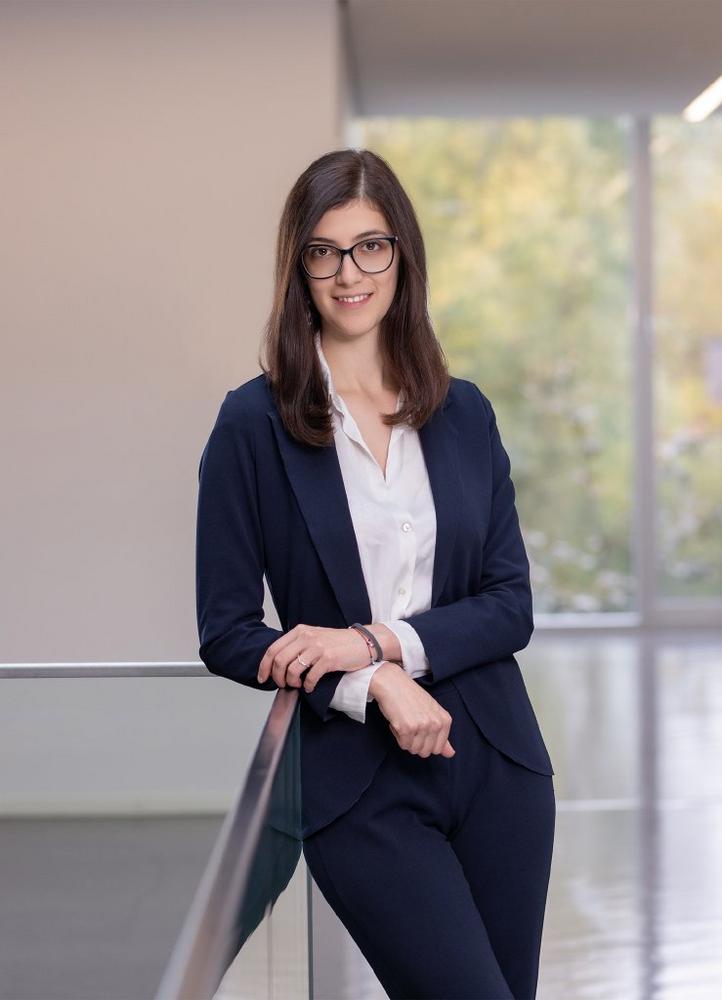The young woman was interested in multipliers and obstacles to collaboration from an early age. "I had the ideal of a society in which you can build a perfect world. With a meritocracy where people who act are rewarded and feel they have contributed something," explains Dr. Carraro.
On her academic journey, the Italian-born woman got to know different cultures and mentalities: Michigan and Finland during her bachelor’s degree, master’s and doctorate in economics and management in Padua, Italy, with stays abroad in Bogotá and Zurich. "All countries have enriched me and taught me a lot," the postdoctoral researcher looks back.
Unused potential
One encounter in particular was to pay off along the way. During her time in Zurich, she asked her current postdoctoral supervisor, Professor David Wuttke, about the ideal way to conduct an experiment. Little did she know that this would later lead her to the TUM Campus Heilbronn: "I saw the offer from TUM, researched who was behind it, and when it was David Wuttke, I jumped at the chance."
Of course, the research topic also played a major role in her decision: "What makes people behave in a certain way, contribute or not contribute?" She considers her father, a retired production worker, for example, to be a genius, but: "I don’t know if he brought all his ideas to his workplace to improve the place where he works."
Creating social identity
Today, she is trying to find out exactly that: "In our research, we have focused on a shared mental model as an aspect of social identity." Social identity arises when employees recognize themselves as part of a team. They then also take responsibility for the team’s goals. Metaphorically speaking, the individual fish feels lost in the water and that has consequences: "Employees then don’t really interact, don’t contribute anything and don’t want to change anything. They simply concentrate on their own work and then go home."
So does swarm intelligence exist? "The literature generally assumes that people who think alike tend to think in groups," explains Dr. Carraro. This leads to them not being able to think outside the box and becoming stuck in the status quo. This mental lethargy ultimately reduces productivity. A misconception "At least in our sample, we found that people who think similarly develop a team identity which encourages them to make more contributions and come up with more ideas for improvement."
Identification is the trump card
"The most amazing thing was that the approach and shared understanding always led to a positive, proactive reaction and not to this groupthink." When the feeling of being heard and understood prevails, the opposite is the case. "I would say that an identified team is a good team. If you recognize yourself as part of the team, you are not afraid to contribute and can discuss ideas constructively."
Data collection for the study involved surveys on two levels: firstly with each individual production employee and then in a team context. In total, the data came from 13 Italian production companies. In the end, observations from 48 team leaders and 266 employees were taken into account.
Reward for the effort
The effort was worth it. The study passed the peer review process and was published in the renowned journal "Human Relations". A reason to celebrate for the young scientist: "I am very proud that our study has been made accessible to a wider audience in a leading journal." Meanwhile, the next projects are already in the pipeline: "On the one hand, I’m researching the possible use of augmented reality in production, and on the other, virtual reality in the service sector."
The findings from the group dynamics also have an influence on her current research teams: "If we don’t agree on certain aspects, we try to have a constructive exchange and unify the direction again before we move on," she says with a laugh.
Die TUM Campus Heilbronn gGmbH
Bildungscampus 2
74076 Heilbronn
Telefon: +49 (0) 7131 264180
Telefax: +49 (7131) 645636-27
https://www.chn.tum.de/de
Telefon: +49 (7131) 26418-501
E-Mail: Kerstin.Besemer@tumheilbronn-ggmbh.de
![]()

